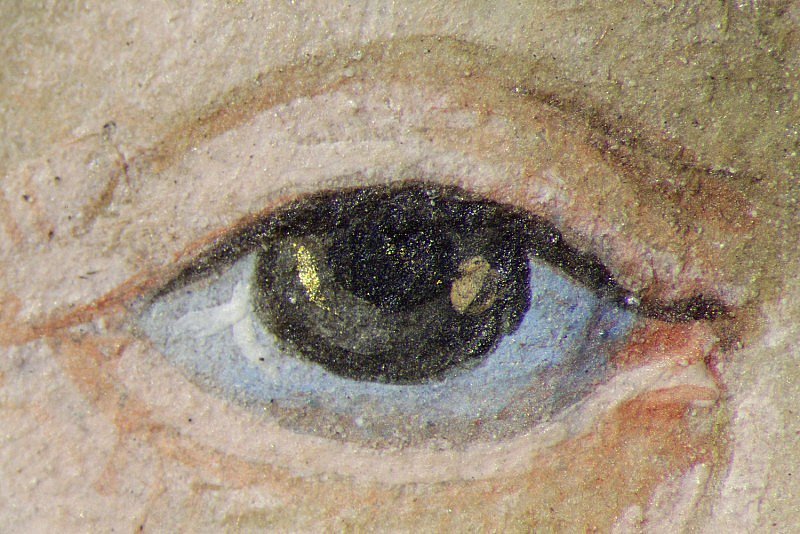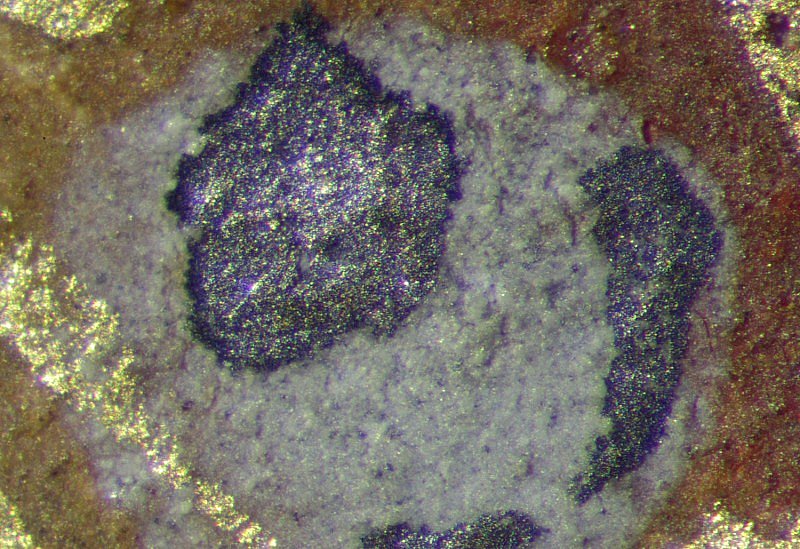Green pigments and mixtures
Artists' Materials
Green hues were obtained in a variety of ways: copper sulphates, copper carbonates as well as mixtures of azurite with lead-tin yellow and an organic yellow were identified. The individual artists seemed to favour one or more of these greens, which helps define their ‘signature’ palette.
Areas painted with copper sulphates were often found to contain high amounts of silicon. This may be due to the presence of quartz and other silicates, which would be naturally mixed with mineral copper sulphates.


Christ as Saviour of the World (prayer Salve sancta facies)
This page was illuminated by the Painter of Additional 15677. Christ’s image is framed within an elaborately carved wooden structure casting shadows on the pink wall behind. It incorporates three-dimensional images of saints and the story of St Veronica painted in shell gold on a monochrome background, simulating a scene carved in relief. The frontispiece to the prayer ‘Hail, holy face’ fuses two popular devotional images – Christ as Saviour of the World (Salvator mundi), blessing and holding a crystal globe, and the Holy Face, Christ’s true image. The latter, not made by human hands, was miraculously imprinted on St Veronica’s cloth (known as the vernicle, sudarium or the Byzantine mandylion), when Christ wiped his face on the way to Golgotha.
Christ’s eyes reflect heavenly light, their glow painted in shell gold on one side, and a mixture of two luminous colours, vermilion and lead-tin yellow type I, on the other (hotspot 1). The globe is a pictorial study of reflection and refraction. Its silver highlights appear bright on the left side, but very dark – as if tarnished – on the right side. This may have been an intentional effect, aimed at conveying the three-dimensionality of this sphere. The dark grey outlines which decorate the grey gems in the medallion (hotspot 2) also contain silver.